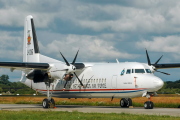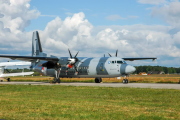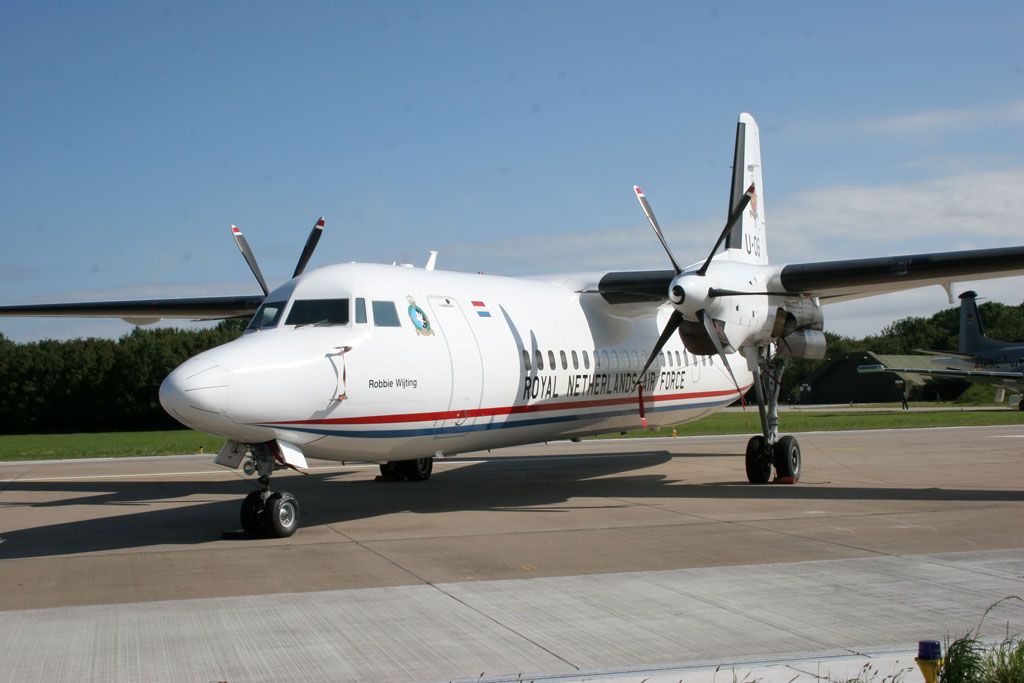|
Service history of the Fokker F 50 and F 60 with the RNLAF
The two Fokker 50 and four Fokker 60
aircraft are the successors of the three Fokker F-27-100 Friendships and
nine F-27 300M Troopships that were the workhorses of the Royal
Netherlands Air Force for decades until they were taken out of service
in 1996.
|
Helicopter Force
|
 |
 |
Delivery to the Royal
Netherlands Air Force
The Fokker 50 is a turboprop-powered airliner, designed as a refinement
of and successor to the highly successful Fokker F27 Friendship.
As
where the
Fokker 60
UTA-N
is a stretched freighter version of the Fokker 50 specially
designed for the RNLAF the only costumer for the type . The
Fokker 60
UTA-N
were build from the Fokker 50 via the addition of an enlarged fuselage
making it 1.62 metres longer than the Fokker 50 and a strengthened cargo floor.
The strengthened cargo floor was necessary for the possible transport of
a F-16 engine.
The
two Fokker 50 and four
Fokker 60 UTA-N aircraft were delivered to the KLu in 1996.
Two of the Fokker 60 were later converted and used for air
reconnaissance for the Coast Guard of the Netherlands Antilles and Aruba
as a stop gap measure. A task preformed for 2.5 years

Operational history
The two Fokker 50s were mostly used for personnel transport (up to 25 or
30 people, depending on the version) and had the same colour scheme as the
Gulfstream: white with a blue trim. In the secondary role the air force used the Fokker 50 for
troop and materiel transport and for medical evacuation flights (medevac).
The Fokker 50 have been deployed during there operational life to Turkey following an earthquake and
supporting Dutch military personnel in Italy in transporting
humanitarian-assistance supplies to Albania.
The Fokker
60 Utility airplanes from the RNLAF were capable for various missions:
transport of people, cargo and medical evacuation. The Fokker 60
was equipped with electronic countermeasures could so operate in a war
environment. They were also used by the
Dutch Amy para troops and the Dutch green berets for para dropping.
To help fill the gap left with the retirement of the Orion, Stork Aerospace Industries
modified two
Fokker 60s for the Royal Netherlands Air Force, to be
stationed in the Netherlands Antilles and Aruba . The modifications to the Fokker 60s included
an enhanced radar system, additional fuel tanks and special observation
windows suited for surveillance tasks. The Fokker 60 MPA resaved no anti-submarine, anti-surface,
or any other offensive capabilities during this modification
|